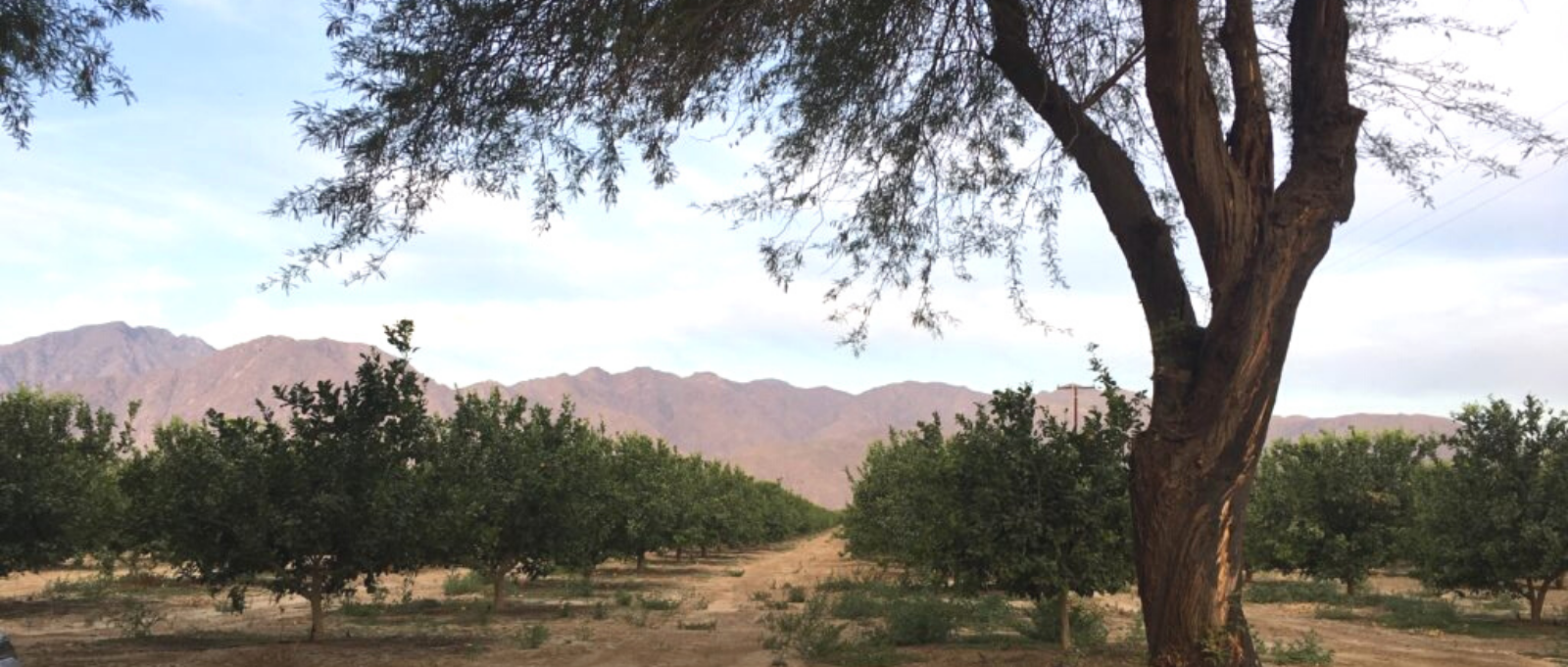September 3, 2020
Topic
A little town in the middle of a vast wilderness – Borrego Springs is not your typical California community. Slow-paced desert living is a draw to those looking for a second home or a peaceful life among the Ocotillos and Creosote Bush. The Anza-Borrego Desert State Park wilderness stuns tourists and residents alike.
As our last article discussed, the Borrego Valley aquifer holds the key to the community’s future. Borregans will need to fundamentally change their lives in order to meet the state’s water water reduction mandates – farmers, businesses, and townspeople alike. CivicWell (formerly LGC) is working with Borregans to take a holistic approach to integrated planning that accounts for all components of the community.
Knowing that there is no single right answer for how these complex problems should be addressed, CivicWell seeks to elevate community voices to better understand the key concerns, values, and drivers that affect past, current, and future decision-making. Ten individuals – including full-time and seasonal residents, commuters, weekenders, and outsiders who have participated in planning efforts for Borrego Springs – lent their unique voices to interviews with CivicWell and a team of Stanford student interns. The discussions were aimed at understanding each individual’s perspective on the community’s water and land-use history, as well as their visions for what the future of this desert town may bring.
Several common themes arose throughout conversations with members of the Borrego community.
Belonging
Economy
Environment
Future Vision
A sense of belonging is necessary for community action to take root. Many Borregans described the demographic, political, socioeconomic, and language barriers that divide the community. From weekenders to farmers, Borregans bring their own experiences and perspectives to shape community decisions. Borrego attracts a diverse array of people because of its vast beauty and serenity, a unique contrast to the fast-paced, traffic-filled cities that are home to millions of Californians. Historic tensions (See Article 2) and disagreements over resource-sharing have elevated the question of belonging for many, while motivating others to mobilize.

From grapefruits to golf courses to the Anza-Borrego Desert State Park, the economic forces of Borrego are dependent on the region’s planning efforts. Land-use decisions determine water use, which affects long-term prosperity. Simultaneously, limited water resources affects the potential for future growth. Borrego Springs is also designated a Severely Disadvantaged Community, as determined by median household income. Most of the community lives below the poverty line, while the outliers have helicopter landing pads. The clear disparity begs the question: what does collective economic prosperity look like for the community?

Dark skies, open terrain, and natural beauty will continue to attract both new residents and tourists. Travelers flock to the region when a wildflower Super Bloom occurs, causing an unpredictable influx of activity. Limited natural resources and a remote location further complicate the goal of becoming a sustainable desert community and serving as a prime model for others. Some residents insist that investments in education and technology are necessary in order for the community to truly thrive as a geotourism destination.

Decisions of the past shape the community today. With questions about water-use, combined with limited financial resources, Borrego Springs is at a pivotal decision-making point for how it will move forward. As discussed in previous articles, the community is still working towards resilience it has been trying to achieve for all of its history. Questions arise of how to pull together to ensure Borrego’s long-term vibrancy, and to provide a beautiful future for all. The stakes are high but the tone is cautiously optimistic from residents describing their vision for Borrego’s bright future.
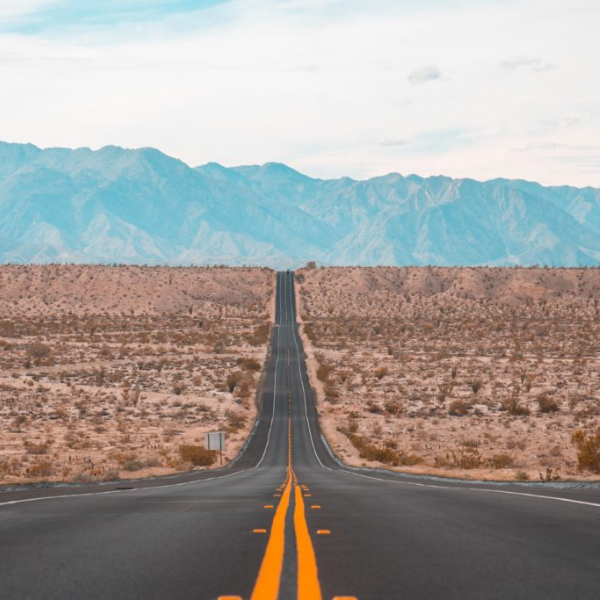
These are the voices of Borrego.
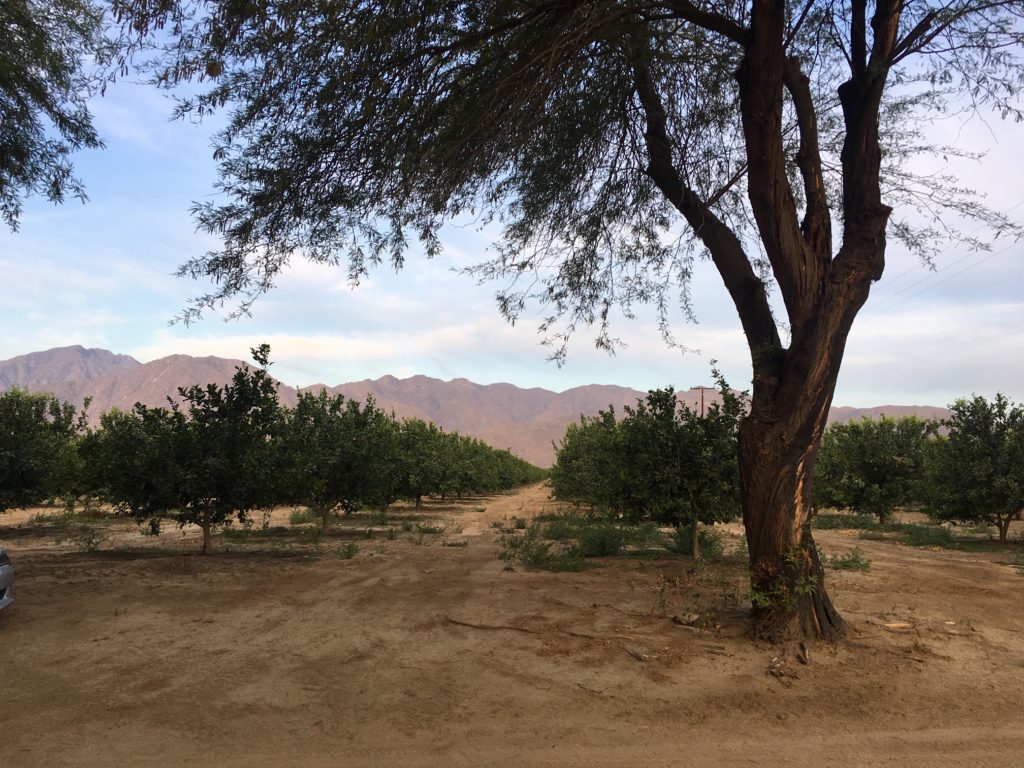
Belonging
“There seems to be a divide in the demographic of people who live in Borrego, between people who are [here] because of the park, people who work in agriculture or restaurants, and others who want to live there because it is low-cost.” – Full time resident
“There are a lot of community representatives who, when they see something is not right, they call up a friend, they talk about what they can do. They pull together the people they think can make a difference, and they create a plan.” – Full time resident
“The belief systems from individual to individual vary widely; There’s currently no way to bring the community together in a forum to allow people to express themselves or to find some sort of common vision.” – Full time resident and small business owner
“I think now there’s a much better dialogue across the ideologies, and I think we’ve been able to work on some of the problems together by just being human, and just talk to each other.” – Weekender and local business owner
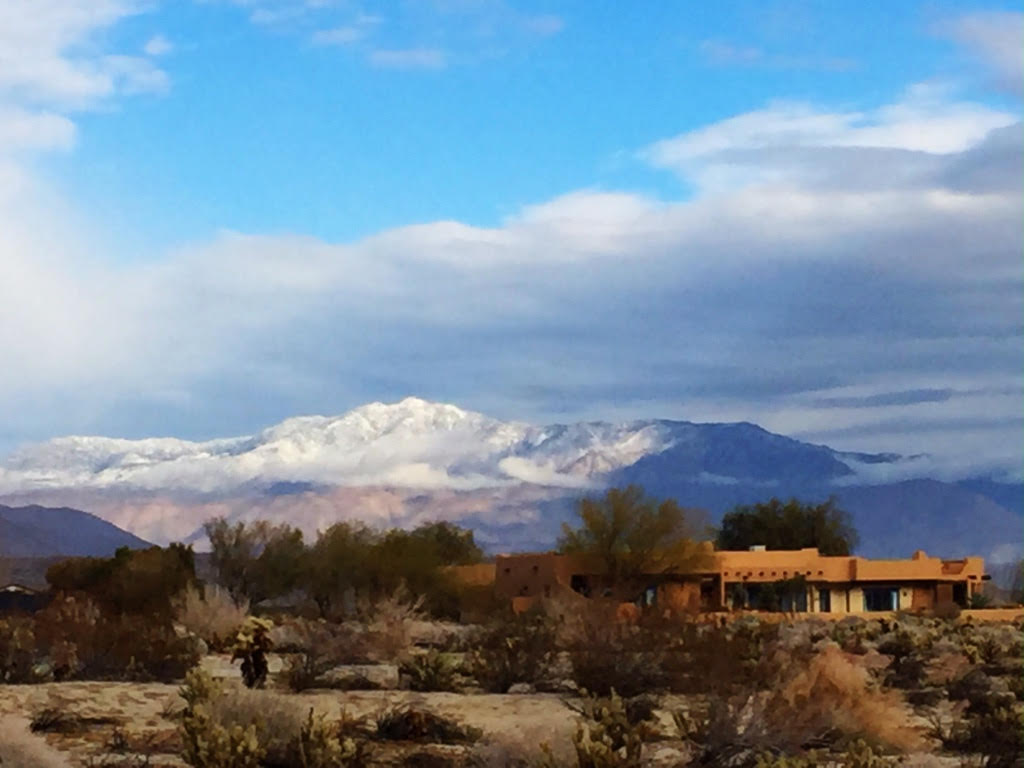
Economy
“Tourism is what drives the economy. So, to be able to build an economy with sustainable tourism, I think it’s a long term future for the community.” – Full time resident and small business owner
“Utilizing the beauty of the area and the park to create new business, but also to give opportunity to underserved populations or other community members that.” – Full time resident
“Right now, it’s really hard for a family like mine to even purchase all of their groceries in Borrego. You can’t. You can’t afford it. A pound of beef is ten dollars. Buying a gallon of milk and cereal is twenty dollars. How long is that going to last you when you have four kids?” – Full time resident
“Now we have to go back to the drawing board and look at how we do use our land, and how we do use our water in a way that we can develop a new economy.” – Full time resident
“We have a lot of people that are dependent upon the farms. Not just the workers, but their families and the schools.” – Commuter and former resident
“On one hand I believe the ecotourism idea. On the other hand I don’t think it’s a silver bullet. It’s not a one solution answer to the valley.” – Weekender and local business owner
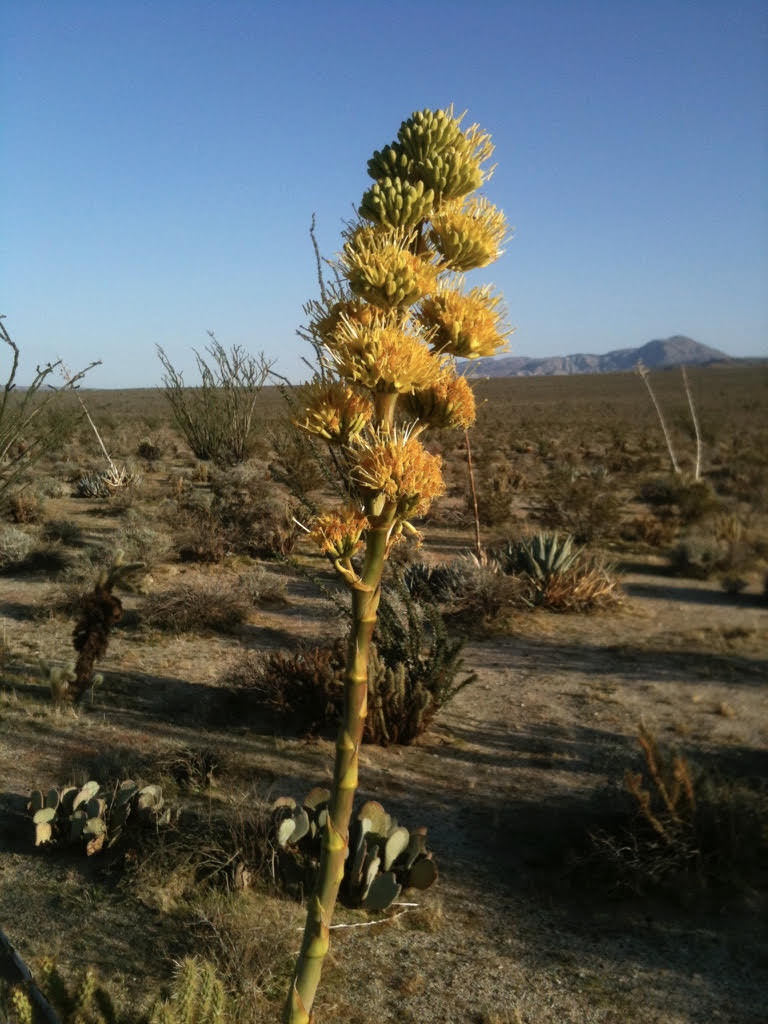
Environment
“Like most residents here I really like that it’s on the edges of society. I like being in a small rural environment, and yet it has the advantages of having a small town.” – Full time resident
“It’s an escape for us. It is so different from where I live and do Monday through Friday that it’s an escape. There’s open space. Once you get an appreciation for the desert, it’s beautiful. It’s a refuge for me, to go out there and just be free.” – Weekender
“I like the weather, I like the solitude, the lack of traffic, the beauty. The vast, quiet beauty.” – Seasonal Resident
“In Borrego, you don’t forget you’re the desert. There is a special serenity here, which is all tied to the park.” – Full time resident
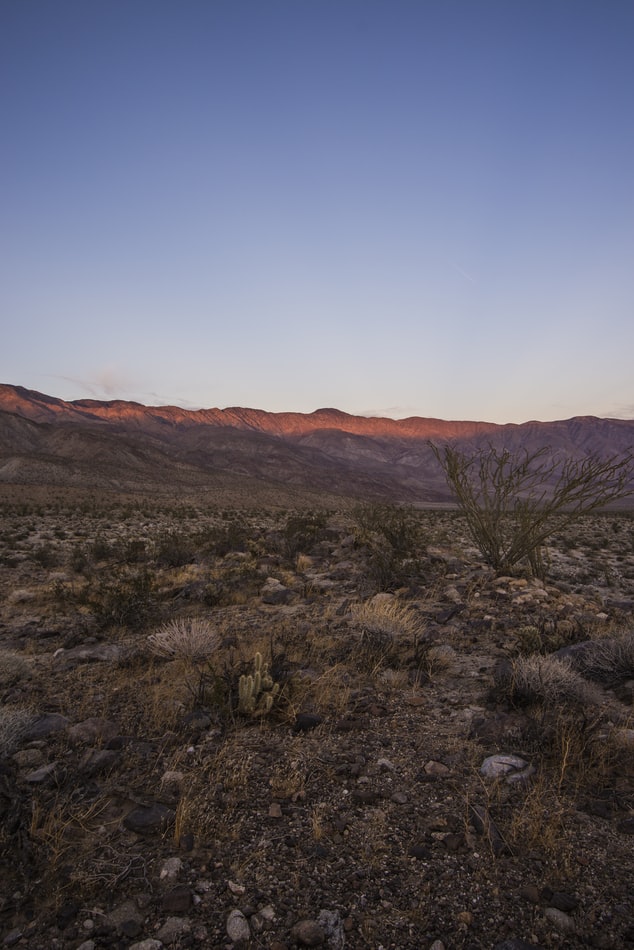
Future Vision
“I’d like to see it turn into a full fledged community that has a multigenerational community. I think you can find a good balance of leveraging the resources of the park with the agricultural operations, the recreational operations, and the general community.” – Weekender
“We have the possibility of becoming a model sustainable community. The importance of that word – sustainable – is just laid bare in a place like Borrego Springs. We essentially are an island, surrounded on all sides by wilderness and on this island, we have to be sustainable from a water standpoint– because there’s not gonna be any more water. We either manage what we have, or we die.” – Seasonal Resident
“When you have an incredibly beautiful spot in the world, how do you develop it in such a way that you really enhance the character of the place rather than destroy it?” – Seasonal resident
“There is a massive opportunity for Borrego to lead the way in understanding innovative ways to code and create better land use, to monitor water use, and to come up with ways of building a new economy.” – Full time resident
From these interviews, we heard about the deeply complex relationship between society and the environment. As we’ve seen in Borrego’s history, human impacts – like overpumping of the Borrego Valley aquifer – generate ecological change. Simultaneously, changes to the environment – Borrego’s declining groundwater levels – influence society, the economy, and the environment.
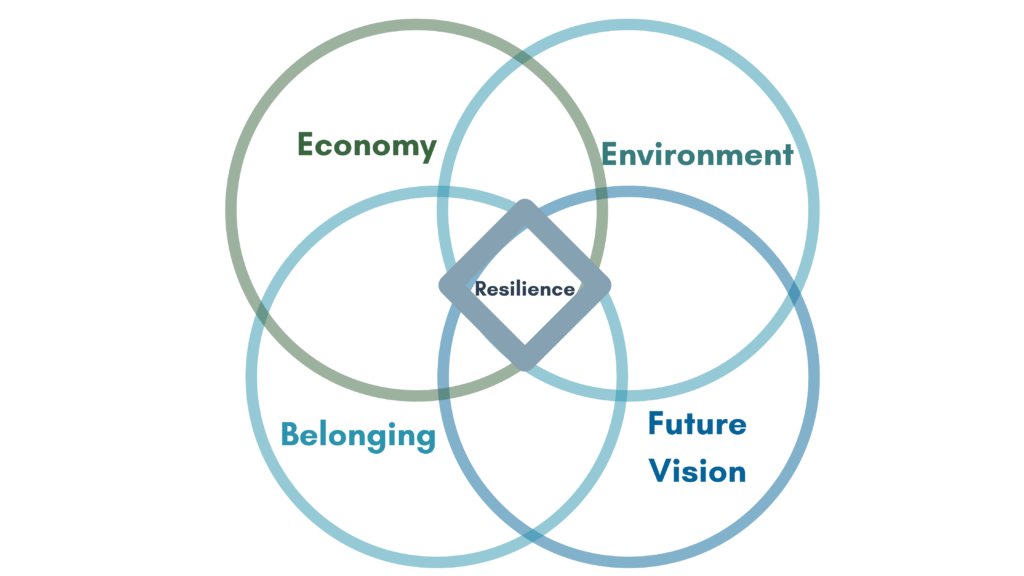
Water use reductions prompted by groundwater legislation will significantly impact Borrego’s economy and socioeconomic structure, while also causing long-term environmental effects. The region’s greatest water users – local agriculture and golf recreation – are also the primary drivers for the community’s economy. Any change to agriculture or golf will disrupt local employment, and potentially degrade air quality due to land fallowing. This could lead to a ripple effect, with job loss and public health risks impacting the number of families living in the area, in turn affecting local commerce, housing demand, and school enrollment, among other factors.
These circumstances, while seemingly dire, present a significant opportunity for the Borrego Springs community to proactively pivot toward a sustainable future, based on an economy that will vitalize the region while living within its natural resource constraints. Borrego Springs can serve as a model for other communities for a just and resilient transition in the face of significant socio-economic and environmental disruption. To succeed, efforts must be unified and collaborative across sectors, socioeconomic status, community values, and personal interests. No piece of the community fabric can be overlooked.
An integrated approach to addressing the community’s challenges will address the complex relationships between water use, as well as the economic, social, and environmental factors that underlie Borrego’s vitality, and strategize activities necessary to turn Borrego into a thriving and resilient community.
Five Stanford University students participated in this work by conducting interviews with community members. Many thanks to Sophia Boyd-Fliegel (‘21), Nicole Jehl (‘23), Ahmi Dhuna (BA ‘19 MS ‘20), Danny Nguyen (‘22), and Caroline Aung (‘20). The collaboration was organized through the students’ spring course, “Environmental Anthropology and the Intersectionality of Justice” led by Dr. Maira Hayat.





